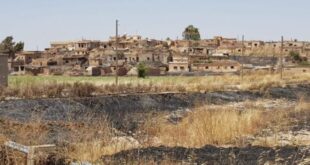
BANDA ACEH –
Confirmed deaths from
With 71,763 dead, rotting corpses, smashed sewers, contaminated water and a lack of food and shelter, along with mosquito-borne diseases such as dengue fever and malaria, could wipe out weakened survivors in their tens of thousands, UN and other experts warned.
In Indonesia alone, the United Nations said the death toll from the gigantic earthquake and tidal waves it spawned that hit on Sunday could be as high as 80,000.
“According to information received by OCHA from local government officials, the death toll could be between 50 to 80,000,” Oliver Lacey-Hall, a spokesman for the UN’s Office for the Coordination of Humanitarian Affairs (OCHA) told AFP.
By the hour the confirmed tolls ticked up relentlessly in other hard-hit countries, including Sri Lanka, India and Thailand, where the stench of death and mass burials combined with traumatic grief and looting to create an apocalyptic vision for overwhelmed relief workers.
“The immediate terror associated with the tsunamis and the earthquake itself may be dwarfed by the longer term suffering of the affected communities,” said David Nabarro, the top official at the World Health Organisation dealing with humanitarian crises.
Food and medicine were already desperately short in many stricken areas.
The task of preventing this second wave of suffering is unprecedented, with UN disaster relief coordinator Jan Egeland saying relief operations would be the biggest in history.
UN Secretary General Kofi Annan joined the chorus of warnings that the death toll could rise dramatically, adding that the victims were “looking to the international community to respond and respond generously”.
“Down the line, I think we are going to need billions. Billions of dollars,” he said.
While the aid organisations made their plans and governments around the world pledged cash and despatched ships and aircraft to help, the millions of bereaved and homeless faced a seemingly hopeless task of rebuilding shattered lives amidst utter chaos.
Half of the confirmed dead — more than 36,000 — were in the Indonesian
The rich holidaying on tropical islands once considered paradise also fell victim to the waves, with western tourists accounting for most of
A total of 99 Europeans were reported dead and another 2,811 were missing from:
Models, multi-millionare football players, royalty and movie stars were among those sent running for their lives as the sea surged ashore around the region.
But the vast majority of the dead were local inhabitants of the 11 affected countries from
“Children can run, but they are less able to hold on, to withstand flooding waters,” Bellamy said.
There were stories of miraculous escapes, such as that of a 13-year-old girl who survived after spending two days clinging to a wooden door in the
But there were far more stories of unspeakable horror, with mass burials underway everywhere with little formality but accompanied by huge outpourings of grief from people who had lost their entire families, homes and livelihoods.
In
The first shipments of international aid were arriving in the city of
A race was on to reach the isolated northwestern shores of Sumatra where the first contact was made after three days of worrying silence from an area buried by towers of water reaching 10 metres (33 feet) high.
An Indonesian navy warship has brought food and water to the town of
In Nagapattinam, one of the hardest hit areas of
“I’m scared of the sea,” Maghadevi, 13, told AFP. “I never want to see it again. Even if they give me a free house on the beach, I shall not take it.”
Masked grave diggers worked at whirring speed in the area, heaping bodies into mass graves with no ceremony amid flattened coconut palms and wreckage of flimsy fishermen’s shacks. Others helped pile up wood for mass cremations.
The biggest question mark hung over the fate of people in
Six large aftershocks on Wednesday jolted the islands which were home to many tribes already threatened by extinction.
There has still been no communication with many parts of the chain since the tsunami hit. The Andamans, famed for emerald seas, has a population of 350,000.
The death toll on the archipelago was at least 4,000. Many thousands more were unaccounted for.
Relief co-ordinator Tilak Ranavirajah who was appointed overnight to lead the mammoth effort conceded that officials were still trying to come to grips with scale of the task ahead.
“We can’t even think of guessing the size of the destruction,” Ranavirajah told AFP. “The priority is to get the supplies to the people in most need. We have the entire public service and the military mobilised for the job.”
Throughout the region, hundreds of rescue ships, helicopters and planes were mobilised on relief missions.
The
In a sign of the brutal disconnect between investors and the poor who suffered the tragedy, however, Indonesian and Indian stock markets were hitting record highs on perceived economic good times.
The earthquake so powerful it literally changed the map of Asia has been duly noted and shrugged off by markets more moved by news that Americans went on an unexpectedly large shopping splurge for Christmas.
29-12-2004
ܢܗܪܝܐ
 Assyrian Democratic Organization ADO
Assyrian Democratic Organization ADO






